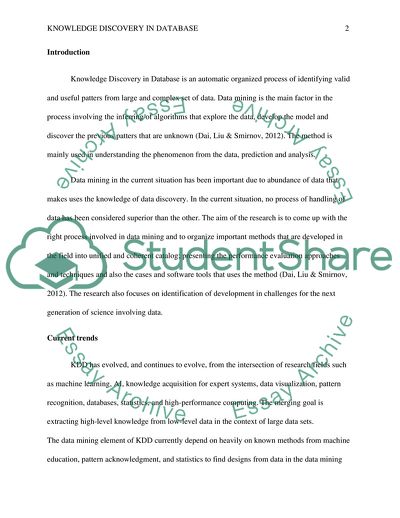Cite this document
(Data Mining and Knowledge Discovery in Database Research Paper Example | Topics and Well Written Essays - 3000 words, n.d.)
Data Mining and Knowledge Discovery in Database Research Paper Example | Topics and Well Written Essays - 3000 words. https://studentshare.org/information-technology/1879652-data-mining-and-knowledge-discovery-in-database
Data Mining and Knowledge Discovery in Database Research Paper Example | Topics and Well Written Essays - 3000 words. https://studentshare.org/information-technology/1879652-data-mining-and-knowledge-discovery-in-database
(Data Mining and Knowledge Discovery in Database Research Paper Example | Topics and Well Written Essays - 3000 Words)
Data Mining and Knowledge Discovery in Database Research Paper Example | Topics and Well Written Essays - 3000 Words. https://studentshare.org/information-technology/1879652-data-mining-and-knowledge-discovery-in-database.
Data Mining and Knowledge Discovery in Database Research Paper Example | Topics and Well Written Essays - 3000 Words. https://studentshare.org/information-technology/1879652-data-mining-and-knowledge-discovery-in-database.
“Data Mining and Knowledge Discovery in Database Research Paper Example | Topics and Well Written Essays - 3000 Words”. https://studentshare.org/information-technology/1879652-data-mining-and-knowledge-discovery-in-database.


